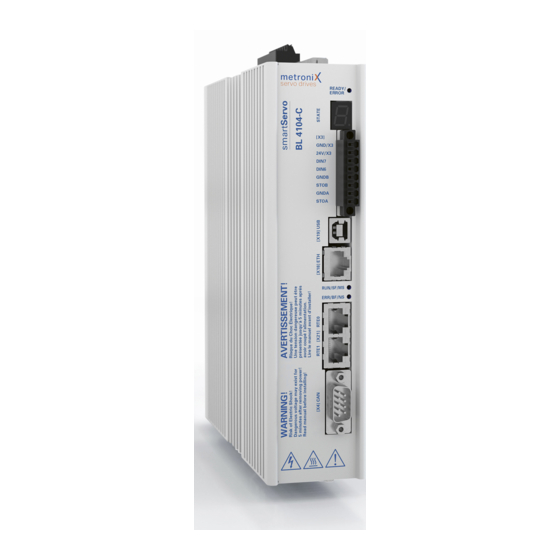
Metronix smartServo BL 4000-C Series Product Manual
Hide thumbs
Also See for smartServo BL 4000-C Series:
- Mounting instructions (36 pages) ,
- Mounting instructions (89 pages)










Need help?
Do you have a question about the smartServo BL 4000-C Series and is the answer not in the manual?
Questions and answers